
Explore the rise of turquoise and Tiffany blue watch dials, from Rolex and Patek Philippe to Tudor and Breitling, and why collectors covet them.
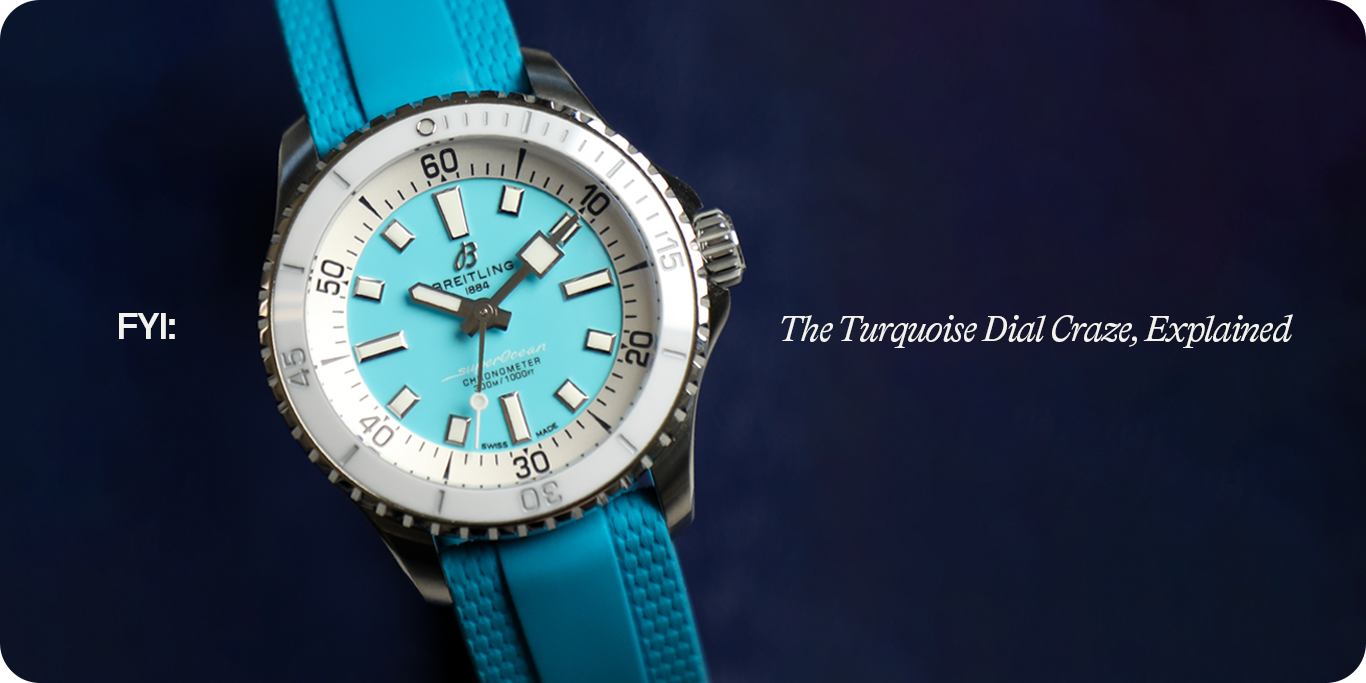
When Rolex discontinued the Oyster Perpetual 41 with turquoise dial in 2022, the secondary market lit up. Watches that once traded near retail suddenly commanded multiples, a staggering premium for what was essentially a simple three-hand steel watch. All because of a color.
That moment made one thing clear: turquoise dials aren’t just a passing fad. They’ve become cultural shorthand for exclusivity, freshness, and a very particular type of luxury. Call it turquoise, Tiffany blue, or Flamingo blue. Whatever the label, the effect is the same. Collectors recognize it instantly, and they’re willing to chase it.
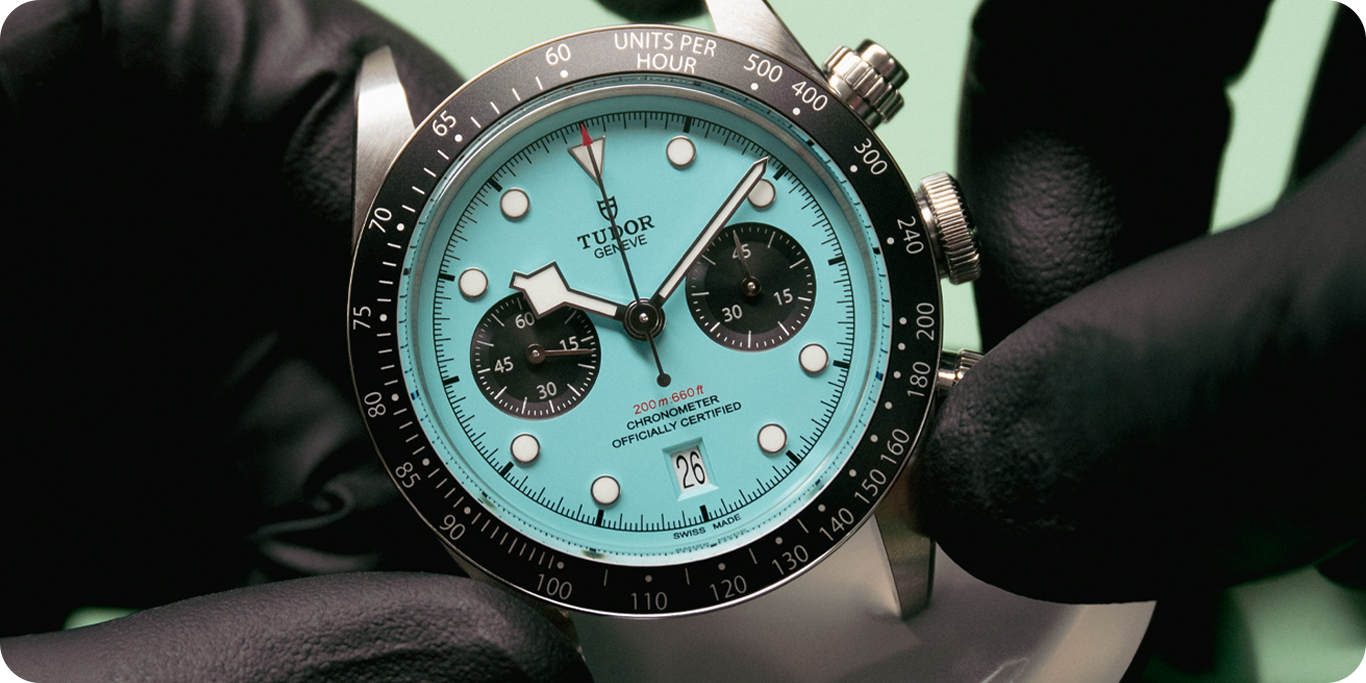
Plenty of dial colors have had their moment. Salmon tones surged in the early 2000s. Green became a modern Rolex signature. But turquoise is different. For more than a century, Tiffany & Co. has guarded its robin’s-egg shade as a symbol of rarefied sophistication. A glance at the color conjures gift boxes, Fifth Avenue, and aspirational luxury.
On the wrist, the shade carries that context with it. Playful but not unserious. Distinctive without novelty fatigue. And in a market where signaling is half the point, turquoise communicates immediately: this is something special.

The watch that cemented the craze. Released in 2020 as part of Rolex’s colorful OP dial refresh, the turquoise 36 mm quickly became the standout. The formula is straightforward: Oystersteel case, three-hand Cal. 3230 movement, clean baton markers. Yet when collectors realized Rolex had injected Tiffany’s signature shade into a core model, demand surged.
The 41 mm version was dropped in 2022, only fanning the frenzy. The 36 mm remains in production but consistently trades above retail, a rarity for such a simple Rolex reference. It’s proof that a single color can elevate a utilitarian model into a cultural marker.
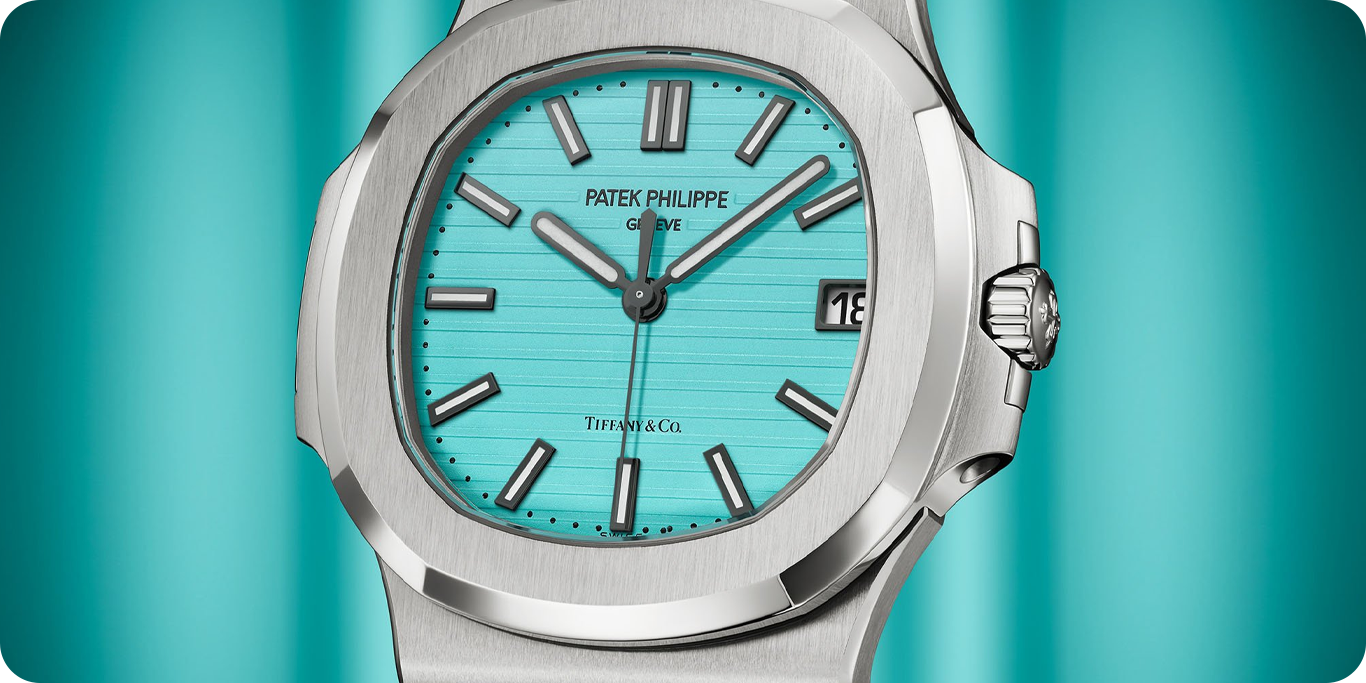
No discussion of turquoise dials is complete without the 5711 “Tiffany.” Released in December 2021 to mark the 170-year partnership between Patek Philippe and Tiffany & Co., the Ref. 5711/1A-018 was limited to just 170 pieces. On paper, it was a stainless steel Nautilus with a turquoise dial and discreet Tiffany & Co. signature at six o’clock. In reality, it became a cultural phenomenon.
The first example sold at Phillips for over 100 times retail, cementing its place as one of the most talked-about modern watches of the decade. More than just hype, the watch symbolized the perfect storm: Patek discontinuing the 5711, Tiffany’s heritage blue, and a collector community primed for scarcity. It showed how a single shade, in the right context, could transcend watches altogether and become a cultural headline.

If Rolex is the mainstream case study, Grönefeld shows the independent angle. The Dutch “Horological Brothers” are known for architectural bridges and meticulous hand-finishing, which is why the 1941 Principia with a matte turquoise dial reads as quietly subversive. The sterling-silver dial’s subdued texture plays against polished indices and casework, allowing color to highlight, not overshadow, the craft.
This isn’t trend chasing. The calibre G-06 inside features a central 22k gold rotor turning on a ceramic bearing, a showcase of thoughtful engineering. The turquoise face reframes the Principia as a rare splash of individuality in a corner of high horology that usually defaults to restraint. For independent-minded collectors, it signals both confidence and taste.
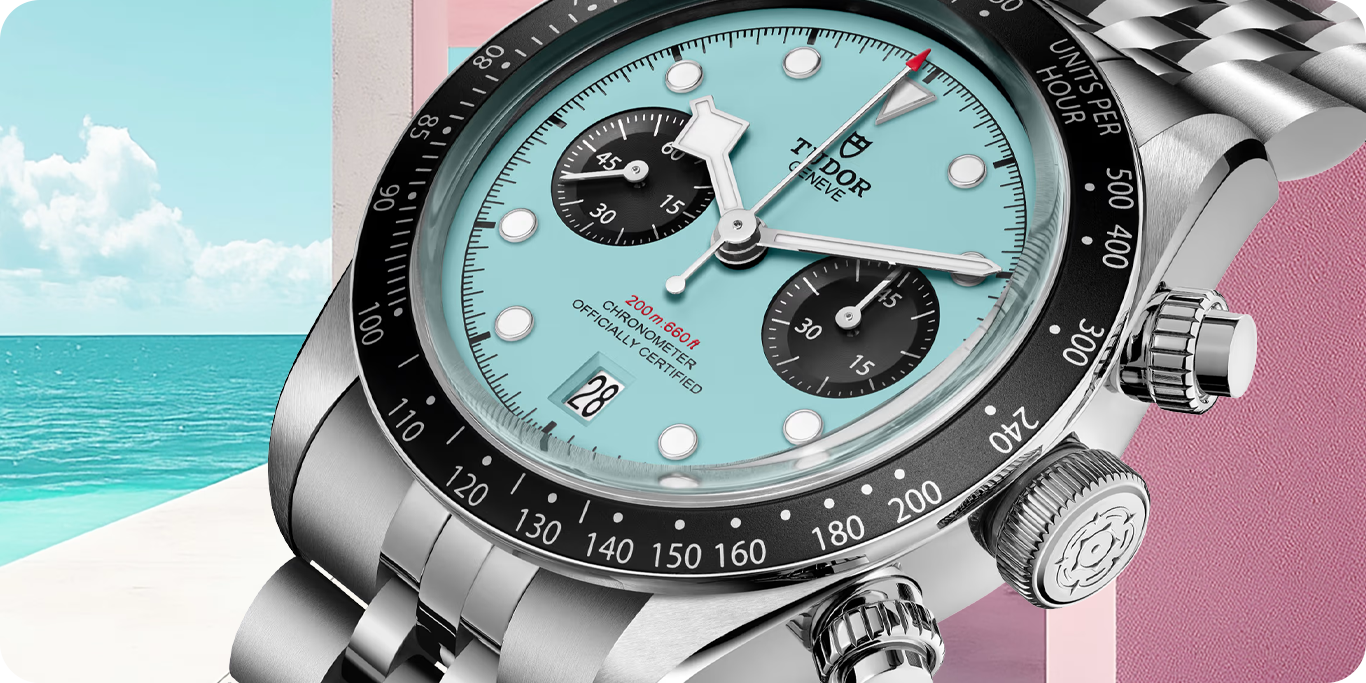
Tudor has, in recent years, leaned more visibly into playful dial colors, while Rolex tends to be more selective about when and where it deploys them. The Black Bay Chrono in “Flamingo Blue” proves the point. The familiar 41 mm steel case, snowflake hands, and robust chronograph calibre with column wheel and vertical clutch are intact; the turquoise dial changes the mood entirely.
Chronograph purists often prefer black, silver, or panda layouts. Tudor cuts against that grain on purpose. The result is a sporty chronograph with a sense of humor; a piece meant to spark conversations as readily as it records elapsed time. It’s a reminder that serious watchmaking and vivid color can coexist without compromise.

Turquoise usually skews elegant. Breitling shows it can go rugged. The Superocean 44 is a serious diver–44 mm in diameter, 300 m of water resistance, broad hands for legibility. In turquoise, the visual weight lightens. A hulking diver becomes approachable, even stylish, without losing its tool-watch bones.
Breitling’s history helps this land. In the 1960s and ’70s, the brand embraced bright palettes as surf and leisure culture shaped design. Today’s Superocean nods to that spirit while tapping a contemporary appetite for color. For collectors, it proves that utility and personality aren’t mutually exclusive.
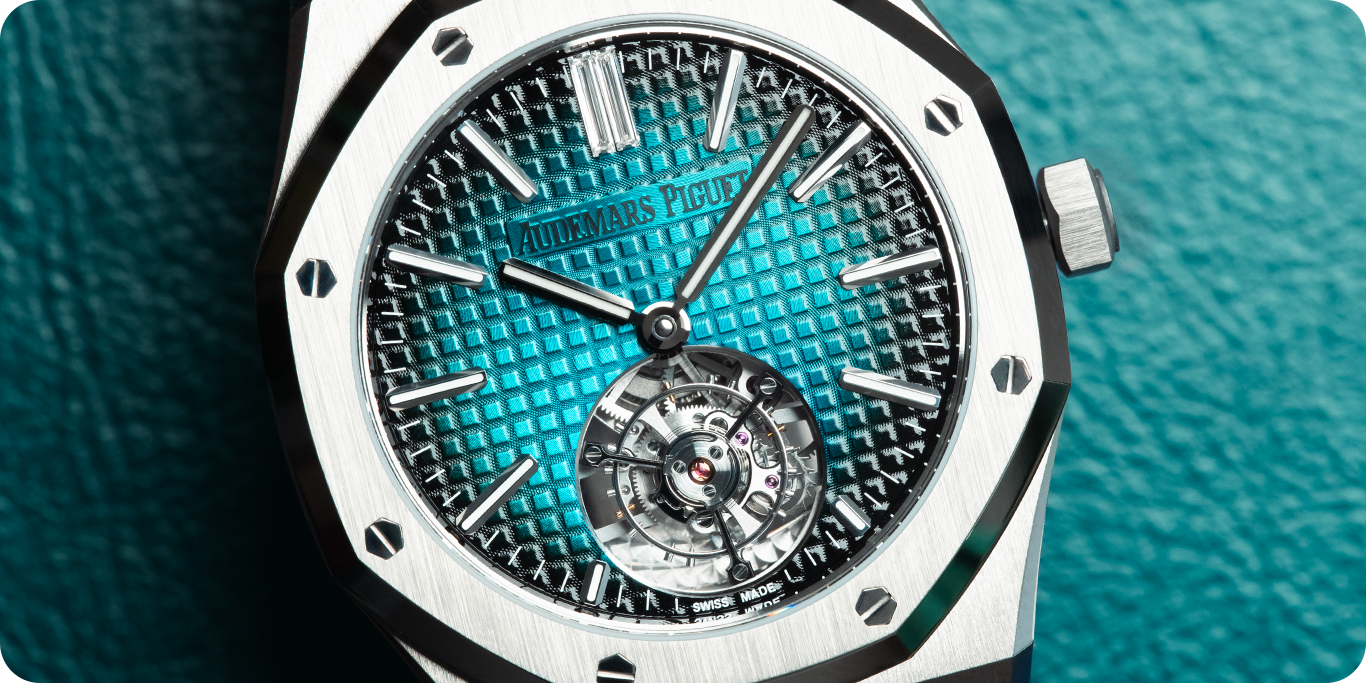
Is turquoise destined to fade, or has it crossed into permanence? That’s the tension worth sitting with. On one hand, the recent frenzy has been fueled by discontinuations and hype. On the other, the Tiffany association is too strong, and too culturally entrenched to disappear entirely.
What’s certain is that turquoise dials now speak a language all their own. They signify rarity, confidence, and a willingness to stand out. And in a collecting world where color is often the quickest route to recognition, that’s a power few hues can match right now.
Bezel is the top-rated marketplace for buying and selling luxury watches. We give you access to tens of thousands of the most collectible watches from the world's top professional sellers and private collectors. Every watch sold goes through our industry-leading in-house authentication process, so you can buy, sell, and bid with confidence.
Download the Bezel app on the iOS App Store or start searching for your next watch today at getbezel.com.
Bezel is available to download on the App Store now. Please reach out to our concierge team if there is anything we can help you with!